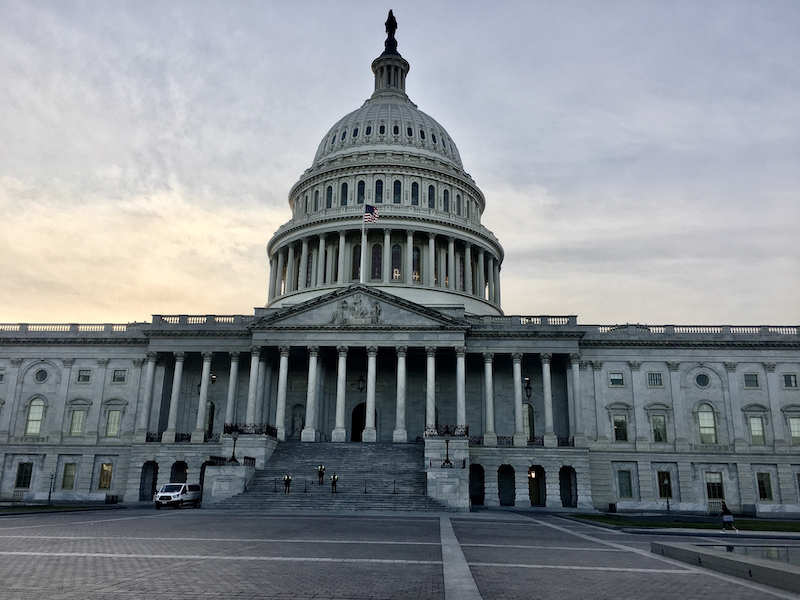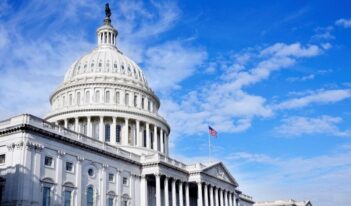
Congress should enact a law that restores tribal regulatory and adjudicatory authority.
Tribes are in a unique position with respect to their ability to regulate within their territories. Although the U.S. Congress tends to support tribal sovereignty generally, the U.S. Supreme Court in recent decades has often reacted hostilely to tribal assertions of regulatory authority, especially when non-member interests are at stake.
When tribal regulatory authority is before the Supreme Court, Indian Tribes currently need the backing of Congress to stand a strong chance of having their assertions of civil regulatory authority upheld, particularly with respect to actions involving non-members. To restore tribal sovereignty, Tribes need a federal statute recognizing and affirming their inherent right to exercise civil regulatory authority over all or some of those non-members who engage in activities or cause effects within their reservations.
This need for congressional support exists despite the fact that Tribes have had some success before the Court in recent years—including, most notably, the recent decision in McGirt v. Oklahoma. The success of McGirt, however, is potentially tenuous, given that it was a 5-4 decision before the addition of Justice Amy Coney Barrett in the seat once held by Justice Ruth Bader Ginsburg.
In the past several decades, Tribes have experienced important, albeit modest, successes in congressional restoration of tribal criminal authority over non-members—including the amendment to the Indian Civil Rights Act that allows Tribes to prosecute non-member Indians and the provisions of the Violence Against Women Reauthorization Act that expand tribal jurisdiction in the areas of domestic and dating violence. The Court has previously upheld a restoration statute in the criminal context, and scholarly analyses support the legality of such statutes generally.
Restoration of tribal civil regulatory authority, however, remains an important concern for Tribes. Clarifying tribal civil authority would allow Tribes to protect against social ills on their reservations. It would also foster more certainty as to the scope of tribal regulatory authority, which in turn would increase efficiency in judicial proceedings. By fostering much needed certainty, restoration of civil authority would also reduce transaction costs.
The current test for tribal civil regulatory and adjudicatory jurisdiction derives from Montana v. United States. The Montana test requires that a Tribe must meet one of two exceptions to exercise regulatory or adjudicatory authority over non-members, at least where the activities at issue occur on non-member owned fee land.
First, a Tribe may regulate when non-members enter into consensual relationships such as contracts with the Tribe or its members. Second, a Tribe may exercise civil authority when non-member conduct “threatens or has some direct effect on the Tribe’s well-being, including the political integrity, the economic security, or the health or welfare of the Tribe.” In Strate v. A-1 Contractors, the Court extended this test to apply to tribal assertions of adjudicatory authority, as well.
Montana itself specifically limits the restrictions it imposes on tribal civil jurisdiction to non-member activities on non-member owned fee lands within Indian country, so it remains unclear whether the Court has extended those restrictions—and the applicability of the exceptions—to tribally owned lands, as well. One case from 2001 suggests that such an extension has occurred, but, due to its unique facts involving the exercise of state law enforcement authority, scholars and lower courts have generally interpreted that case narrowly.
This uncertainty makes it impossible to know whether Tribes will have to meet the Montana test to regulate non-members on tribally owned lands, or if that test only applies to non-member owned fee lands.
The uncertainty about the scope of the Montana test’s application is, however, only one small piece of the uncertainty and doubt that are endemic to the test.
Another, larger problem arises because the Court has been exceedingly reluctant to hold that the requirements of either Montana exception are met. Instead, the Court has come up with a new, post hoc rationale for denying the exceptions’ applicability in each new fact pattern that comes before it.
The Montana test is also extremely fact-based in its application, creating a situation where a regulation’s facial validity usually cannot be ascertained; normally, a regulation’s validity can only be determined under Montana when the regulation is applied to a particular individual and fact pattern. Tribes are therefore left in the unenviable position of having to adopt and attempt to enforce regulations without being able to predict whether a federal court would uphold their jurisdiction. And regulated parties have obvious incentives to try to thwart these exercises of tribal sovereignty.
This chronic uncertainty allows myriad social ills to flourish unchecked on reservations.
Included among a host of governance problems are tribal difficulties enforcing consumer protection statutes and securing compliance with employment preference laws designed to increase employment rates among tribal members. The Court’s curtailment of tribal civil jurisdiction has also impaired Tribes’ ability to fund governmental services, due to Court-imposed restrictions on Tribes’ ability to tax non-members.
Moreover, because tribal criminal jurisdiction over non-members has generally been divested—save in the limited contexts where Tribes have successfully sought congressional restoration of inherent tribal authority—Tribes sometimes seek to exercise civil regulatory authority to address non-member actions, such as sexual assault, that would normally fall within the criminal milieu.
Because of the Supreme Court’s distrust of tribal courts and tribal governance, and the social ills that result from its curtailment of tribal civil jurisdiction, Congress should pass a statute restoring tribal civil regulatory and adjudicatory jurisdiction in some measure.
There are many paths that Congress and Tribes could pursue in legislation, such as a full overruling of Montana, or a more limited restoration, like broadly permitting tribal taxing authority over non-member businesses located on reservations.
A somewhat limited scope may improve the statute’s chances of being passed and upheld, and extensive tribal input should be sought on this question of how broadly to restore tribal civil authority. One approach that may alleviate some of the Supreme Court’s concerns about individual rights would be to have a graduated statute that at first applies only to businesses with five or more employees and then, after a certain number of years, becomes more widely applicable.
Some scholars have argued for restoration solely of tribal adjudicatory authority. But this proposal would leave in place too much uncertainty about when Tribes could apply their laws to non-members, since Montana would presumably still apply to exercises of tribal regulatory authority. The COVID-19 pandemic has magnified difficulties caused by this uncertainty, as states such as South Dakota have sought to exploit the uncertainty by challenging tribal public health measures that affect non-members.
The costs of such uncertainty are simply too high. It would be best for a restoration statute to recognize both tribal adjudicatory and regulatory authority.
One promising proposal is for tribal adjudicatory authority over non-members to depend on a showing of the tribal court’s personal jurisdiction over the defendant under the U.S. federal standard. Because of the Court’s and others’ concerns about the fairness of extending tribal civil regulatory authority over non-members, a restoration statute might also include conflict of laws provisions that clearly explain when tribal law would apply. This approach could provide comfort to lawmakers who may fear that Tribes, like states, would be unduly biased toward applying their own laws.
Due to the vast differences in funding among tribal courts, it would also be beneficial for Tribes to be able to opt in and out of any restoration. Scholars have also proposed that restoration include the opportunity to appeal at least some designated federal issues, such as alleged violations of the Indian Civil Rights Act, to federal appellate courts. Allowing for the ability to appeal allegedly erroneous applications of statutory conflict of laws provisions would also make sense.
Tribes’ success in securing partial restorations of criminal jurisdiction should ultimately be expanded. In the meantime, however, these restorations have paved the way for a much-needed civil restoration statute.
The Supreme Court split 4-4 in its most recent tribal civil jurisdiction case, Dollar General v. Mississippi Band of Choctaw Indians. Because the Court was evenly divided, the lower court’s decision in favor of tribal jurisdiction was automatically left in place. In such cases, a Supreme Court decision lacks all precedential value. Despite the egregious facts at issue in Dollar General, the oral argument was a “blood bath” filled with hostile questions for the Tribe’s advocate, and the Tribe’s victory was razor-thin. Moreover, because the sexual abuse the Tribe sought to civilly regulate in the case occurred on tribal trust land, the case should have been an easy one in which the Tribe would not even be required to meet one of the Montana exceptions.
It is high time for Congress to step in and restore tribal civil jurisdiction. Tribes, just like other governments, need to be able to govern with some level of certainty, and non-members who do business with Tribes or associate with their members will similarly benefit from greater predictability.
This essay is part of a series entitled Native Peoples, Tribal Sovereignty, and Regulation.




